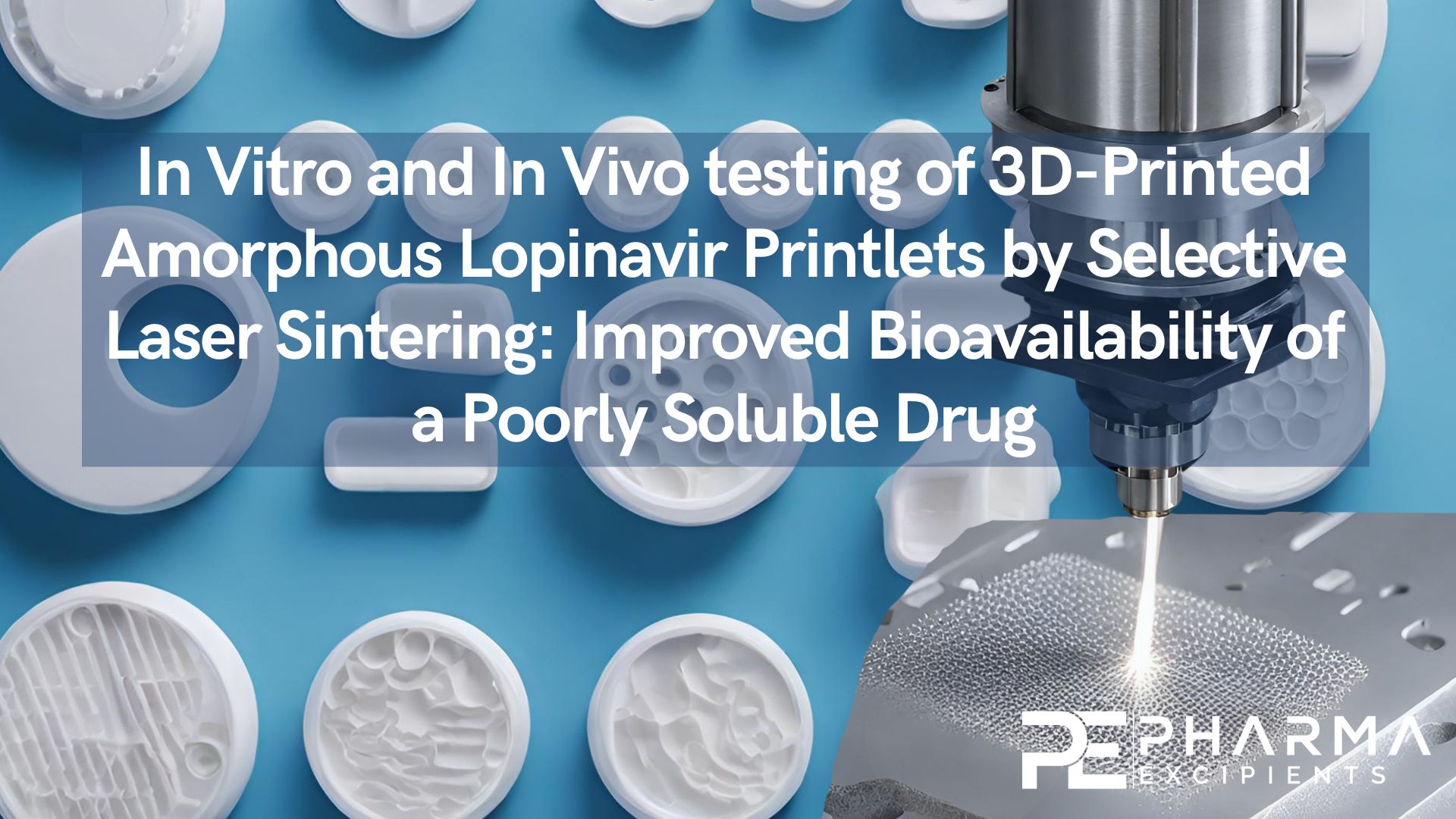In Vitro and In Vivo testing of 3D-Printed Amorphous Lopinavir Printlets by Selective Laser Sintering: Improved Bioavailability of a Poorly Soluble Drug

The aim of this paper was to investigate the effects of formulation parameters on the physicochemical and pharmacokinetic (PK) behavior of amorphous printlets of lopinavir (LPV) manufactured by selective laser sintering 3D printing method (SLS). The formulation variables investigated were disintegrants (magnesium aluminum silicate at 5–10%, microcrystalline cellulose at 10–20%) and the polymer (Kollicoat® IR at 42–57%), while keeping printing parameters constant. Differential scanning calorimetry, X-ray powder diffraction, and Fourier-transform infrared analysis confirmed the transformation of the crystalline drug into an amorphous form.
A direct correlation was found between the disintegrant concentration and dissolution. The dissolved drug ranged from 71.1 ± 5.7% to 99.3 ± 2.7% within 120 min. A comparative PK study in rabbits showed significant differences in the rate and extent of absorption between printlets and compressed tablets. The values for Tmax, Cmax, and AUC were 4 times faster, and 2.5 and 1.7 times higher in the printlets compared to the compressed tablets, respectively. In conclusion, the SLS printing method can be used to create an amorphous delivery system through a single continuous process.
Read more here
Kayalar, C., Helal, N., Mohamed, E.M. et al. In Vitro and In Vivo testing of 3D-Printed Amorphous Lopinavir Printlets by Selective Laser Sinitering: Improved Bioavailability of a Poorly Soluble Drug. AAPS PharmSciTech 25, 20 (2024). https://doi.org/10.1208/s12249-023-02729-y
Read more on Disintegrants here:


